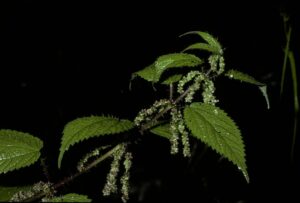How to Propagate Urtica magellanica

From Stinging Weed to Thriving Garden: Propagating Urtica magellanica
Urtica magellanica, commonly known as the Chilean nettle or the Magellan nettle, can be a bit of a controversial plant. Though known for its stinging hairs, this native South American species packs a surprising versatility. While you might want to avoid direct contact, it holds the potential to transform from a garden nuisance into a valuable addition, thanks to its ease of propagation.
The Beauty in the Sting:
Urtica magellanica boasts a vibrant green color, with serrated leaves and tall stalks reaching up to 6 feet. Beyond its striking appearance, this plant offers several benefits.
- Nutritional Powerhouse: Its leaves are packed with nutrients, including vitamins A, C, and K, as well as minerals like iron and potassium.
- Medicinal Properties: Traditional medicine uses Urtica magellanica to treat a range of ailments, from arthritis and allergies to urinary tract infections.
- Attracts Beneficial Insects: It offers a valuable food source for many insect species, playing a crucial role in maintaining a balanced ecosystem.
Unlocking the Power of Propagation:
Urtica magellanica thrives on propagation, allowing you to easily grow new plants from existing ones. This is especially useful if you want to utilize the plant’s benefits without risking the sting. Here are two effective methods:
1. Seed Propagation:
- Harvesting: Collect the seeds from mature plants after the flowers have faded and the seed pods have turned brown.
- Sowing: Sow the seeds directly into the soil during spring or fall. They require moist conditions and plenty of sunlight.
- Germination: Seeds germinate best in warm temperatures (around 70°F) and can take several weeks to sprout.
2. Division:
- Timing: The best time to divide Urtica magellanica is during spring or fall.
- Preparation: Dig up the plant carefully, making sure to preserve as much of the root system as possible.
- Division: Divide the plant into sections, ensuring each section has a good amount of roots and at least a few stems.
- Replanting: Plant the newly divided sections in prepared soil, providing them with adequate moisture and sunlight.
Tips for Success:
- Location: Choose a sunny or partially shaded location for your plants. However, avoid the hottest parts of the day, as these nettles prefer cooler temperatures.
- Soil: Urtica magellanica thrives in moist, well-draining soil rich in organic matter.
- Watering: Water the plants regularly, ensuring the soil stays consistently moist.
- Maintenance: Remove any dead leaves or stems regularly to encourage healthy growth.
Harnessing the Urtica Power:
Whether utilizing them for medicinal purposes, adding them to your compost, or simply enjoying their unique beauty, propagating Urtica magellanica offers a rewarding experience. With a little patience and care, you can transform this potentially prickly plant into a valuable and versatile asset in your garden. Remember, always wear protective gloves when handling this plant to avoid the sting!